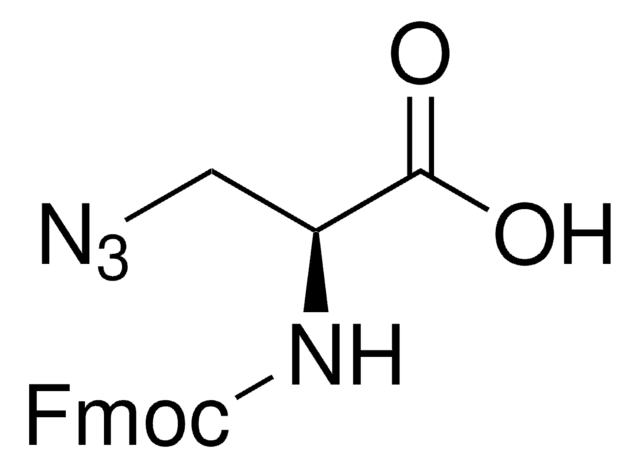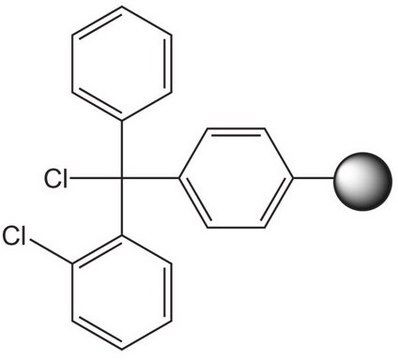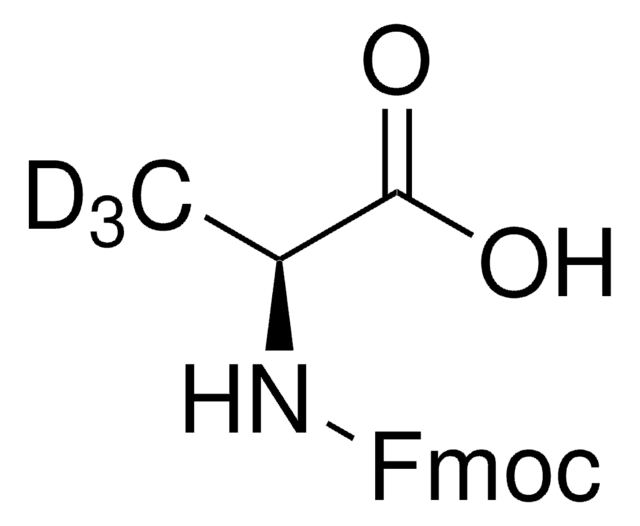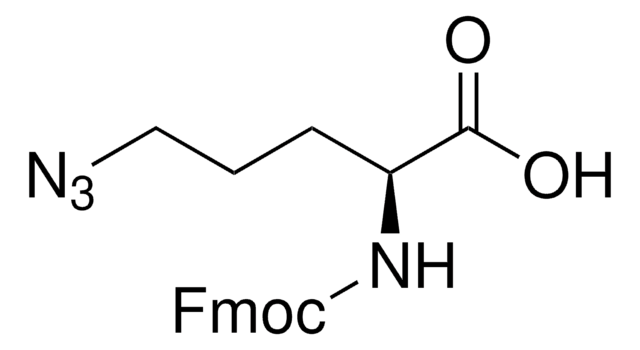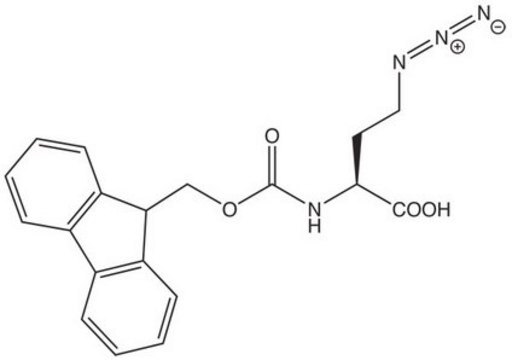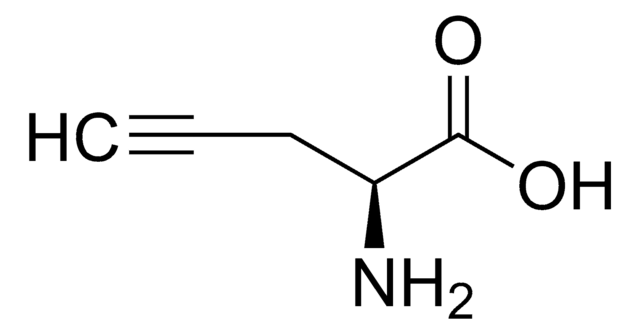900892
L-Azidohomoalanine hydrochloride
Synonym(s):
AHA
Sign Into View Organizational & Contract Pricing
All Photos(2)
About This Item
Empirical Formula (Hill Notation):
C4H8N4O2 · HCl
CAS Number:
Molecular Weight:
180.59
MDL number:
UNSPSC Code:
12352209
Recommended Products
form
powder or crystals
Quality Level
reaction suitability
reaction type: click chemistry
mp
139 °C
storage temp.
−20°C
SMILES string
[Cl-].[N+H3][C@@H](CCN=[N+]=[N-])C(=O)O
InChI
1S/C4H8N4O2.ClH/c5-3(4(9)10)1-2-7-8-6;/h3H,1-2,5H2,(H,9,10);1H/t3-;/m0./s1
InChI key
MHHYJRIDKLZZEO-DFWYDOINSA-N
Application
L-Azidohomoalanine (AHA) is an amino acid analog of methionine that contains a very small modification, specifically an azido moiety. This compound can be fed to cultured cells and incorporated into proteins during active protein synthesis. Detection utilizes the chemoselective ligation or “click ” reaction between an azide and an alkyne or cyclooctyne. For example the azido-modified protein can be detected with either fluorescent alkyne or biotin alkyne. Detection sensitivity with these reagents in 1-D gels and Western blots is in the low femtomole range and compatible with downstream LC-MS/MS and MALDI-MS analysis.
related product
Signal Word
Danger
Hazard Statements
Precautionary Statements
Hazard Classifications
Self-react. C
Storage Class Code
5.2 - Organic peroxides and self-reacting hazardous materials
WGK
WGK 3
Flash Point(F)
Not applicable
Flash Point(C)
Not applicable
Choose from one of the most recent versions:
Already Own This Product?
Find documentation for the products that you have recently purchased in the Document Library.
Expanding the diversity of chemical protein modification allows post-translational mimicry.
van Kasteren S I, et al.
Nature, 446(7139), 1105-1105 (2007)
Teresa Rayon et al.
Science (New York, N.Y.), 369(6510) (2020-09-19)
Although many molecular mechanisms controlling developmental processes are evolutionarily conserved, the speed at which the embryo develops can vary substantially between species. For example, the same genetic program, comprising sequential changes in transcriptional states, governs the differentiation of motor neurons
Our team of scientists has experience in all areas of research including Life Science, Material Science, Chemical Synthesis, Chromatography, Analytical and many others.
Contact Technical Service